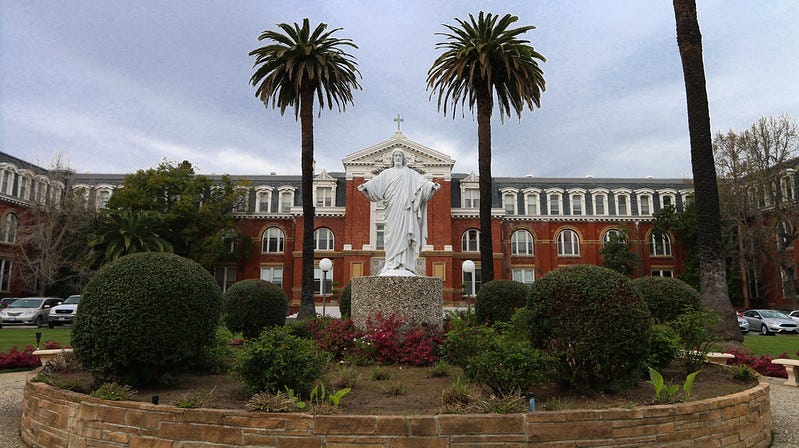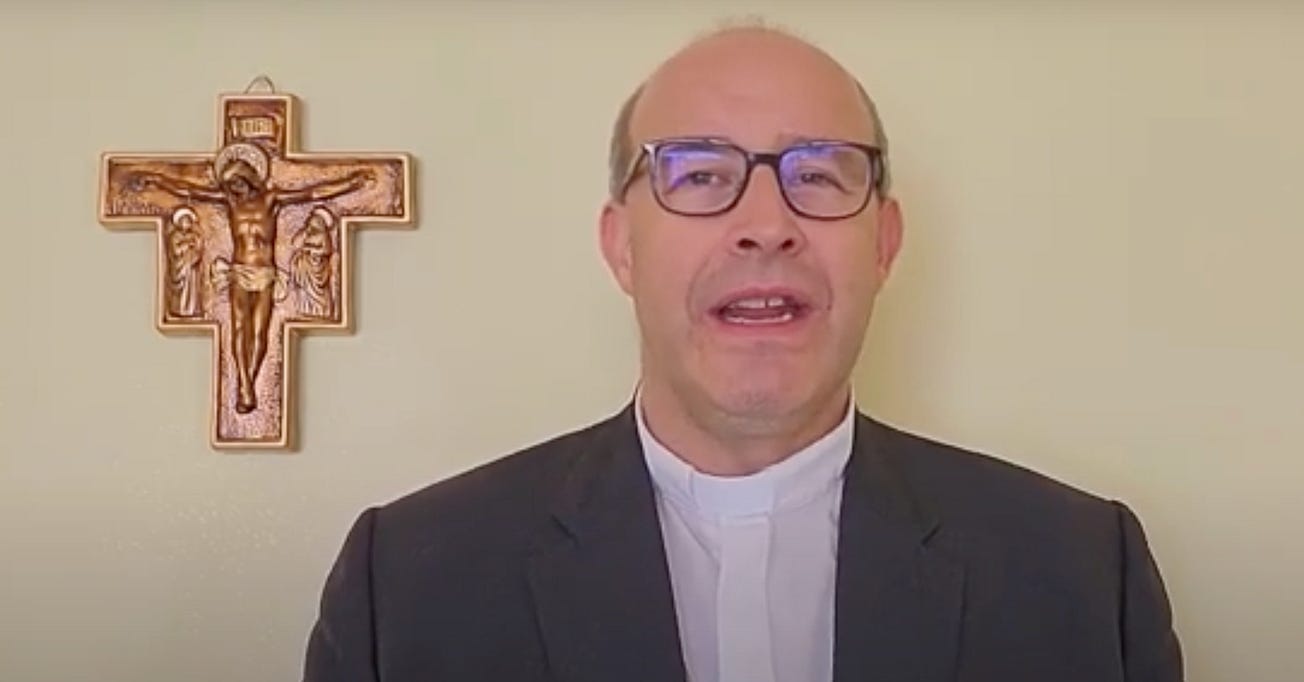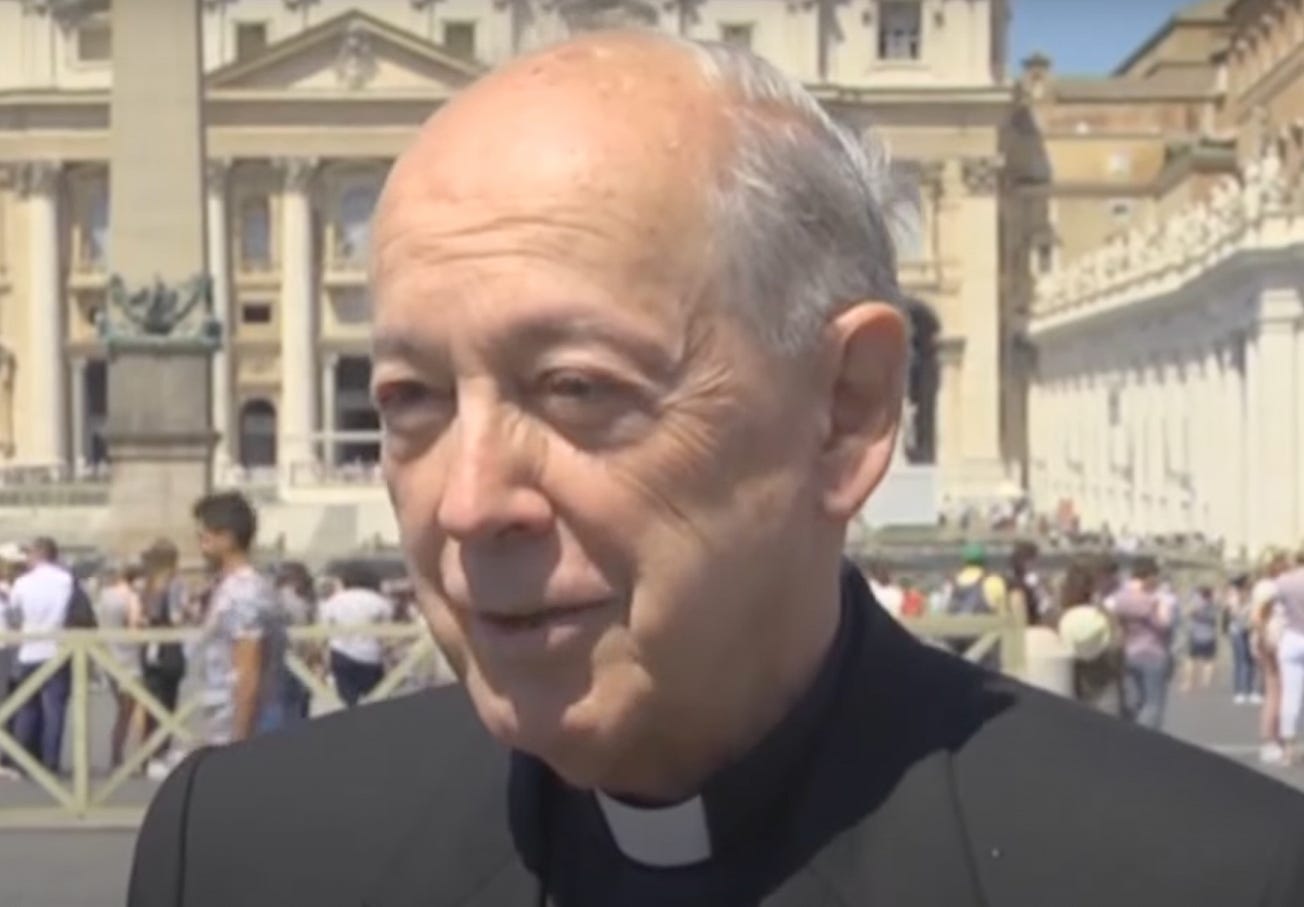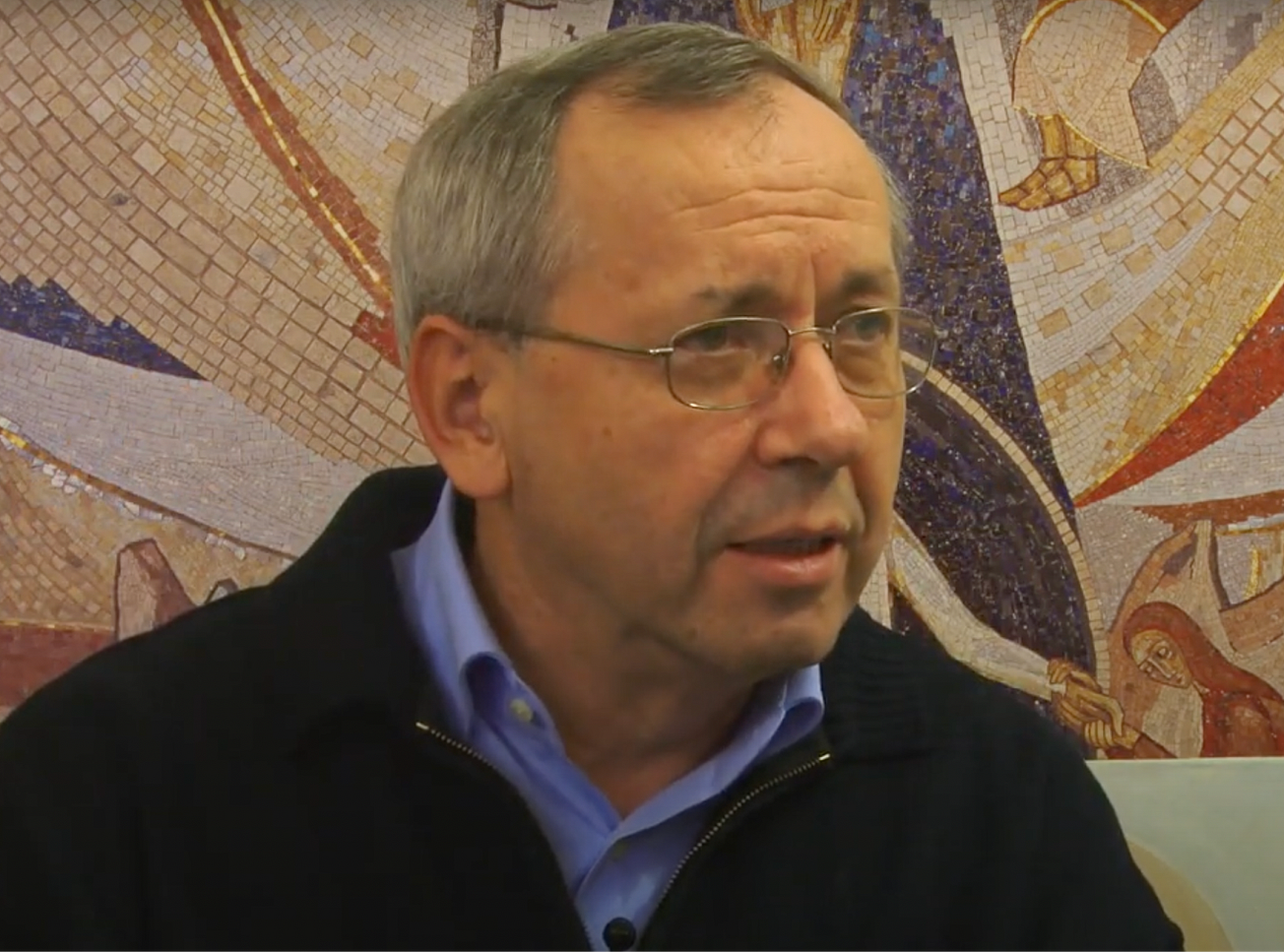Archbishop Salvatore Cordileone is the most recent American bishop to introduce a propaedeutic, or spirituality, year as a component of priestly formation for seminarians studying to become priests in the Archdiocese of San Francisco.
The move comes amid a hangup between Vatican officials and the U.S. bishops’ conference over whether seminarians should be required to spend an entire academic year in a preliminary program of spiritual formation before beginning the rest of their priestly studies. Disagreement over that question has stalled the Vatican approval of a U.S. bishops’ document that would set the framework and expectations of American seminary formation, according to Vatican sources.
In San Francisco, Cordileone told The Pillar that his newly introduced propaedeutic year, for young men entering seminary in 2021-22, has been a long-anticipated project.
“It's been something on my mind actually for a long time,” Cordileone told The Pillar this week, at the opening of the seminary’s academic year.
The archbishop said that the new year’s formation will take place in a dedicated wing of St. Patrick’s Seminary, in Menlo Park, California. Eventually the program will move to its own building on campus to help foster a sense of community and spiritual dedication, the archbishop hopes.
“It is a response to the signs of the times,” he said.
“It's responding to what's happening in the culture and then doing something positive. We're living in such a toxic culture and education is such a hard thing now — people have shorter attention spans, and the pervasiveness of technology and social media feeds that.”
“I don't think a lot of men are really ready for seminary formation when they enter; they need a year basically to detox, to focus on human formation and spirituality in order to prepare them to really reap the fruit of their priestly formation when they enter the seminary.”
Cordileone says that he hopes the propaedeutic year will form “a sort of a novitiate for the diocesan priesthood.”
In addition to focusing on a regimen of prayer, spiritual development, and personal discernment, the year will also include a technology fast, the archbishop said, with students breaking from computers, smart phones, and social media for six days a week.
“That is critical, really critical,” Cordileone told The Pillar.
“I think that these digital devices are isolating people more and more. It's kind of ironic, they're supposed to connect people, but as they do, they really isolate them. It’s hard for people to carry on an extended conversation now. So that's why focusing on human formation needs to have a digital fast as part of it.”
Cordileone also pointed to a general increase in the difficulties facing many families as another factor to be addressed during the new initial year’s formation. “Many of our vocations come from difficult backgrounds,” the archbishop said.
“There are broken families, addiction issues in the family, and of course then there is everything that is out there on the internet now which people grow up with. There’s all of this in the culture that militates against a good formation in the faith, and a solid formation in virtue growing up. All of that is out there, and many of our students arrive as victims of that, and they have human needs we have to address.”
The archbishop said that while the idea for a year of spiritual formation has been important to him for several years, it was a Vatican document on priestly formation, the 2016 Ratio fundamentalis, that finally put the project into motion.
“For a long time, I have been wanting to institute a spirituality year here, but it is difficult to add on an additional year [to the formation process], so we have been doing a kind of spiritual formation in the summers for the students in pre-theology, and then last year we got more serious about instituting a full propaedeutic year because this is in the Ratio fundamentalis.”
“As we started planning for it, and I talked with the other bishops [who send students to study in San Francisco], and everyone was in favor of it.”
The San Francisco archdiocese has modeled its new propaedeutic year on a similar program at St. John Vianney Seminary in the Archdiocese of Denver. During their first year of formation, seminary students in Denver fast from digital media, begin a daily regimen of prayer, go on multiple retreats, practice the spiritual exercises of St. Ignatius, and immerse themselves in ministries to the poor.
Fr. Braden Wagner serves as the director of the Denver seminary’s spirituality year, which he also experienced himself as a seminarian in 2004. Wagner told The Pillar that since the program began in 1998, the results have been overwhelmingly positive.
“Originally, the vision was just to have a good foundation in spiritual formation,” said Fr. Wagner, “to teach guys to learn how to pray well, so that they have that foundation as an entry into studies.”
Seminary formators saw a need to be sure academic progress would not be the only criteria for moving forward in priestly formation.
“Largely, the benchmark has been academics — if a guy has done the classes and he passed the courses, he was able to advance. But we saw that there needed to be more of a foundation in their spiritual life. Over the years, we've seen that guys are increasingly struggling with their human and spiritual formation as they are applying to seminary.”
With time, the spirituality year has developed to encompass both spiritual formation and personal growth. And formators have recognized the healing role that a spirituality, or propaedeutic, year can have, Wagner said.
“There's a certain threshold that a man has to have, and freedom to be able to enter into seminary, to begin with,” Wagner said.
“So much of the formative work of the spirituality year is precisely that — formative — and not necessarily therapeutic. But there's a great deal that happens in that year where there might be certain patterns of attachment that are unveiled by God, and finding some real freedom and healing in that. In the past, these things might not have been integrated very well in the course of formation, but now we have seen how well they can be handled.”
Wagner especially highlighted the experience of fraternity among the students, who live in a separate building for the year and, without the distractions of the digital world, develop the human relationships needed to sustain them in later priestly ministry.
“Guys are feeling more and more isolated, more and more alone in the apostolate,” said Wagner. “These guys as they're coming in, that's one of their biggest concerns, especially around the discernment of celibacy; they’re asking ‘Am I going to live a lonely life? I don't really know if I desire that or want that.’”
“Priests need a rich fraternal life, and so we’re giving some practical formation during this year so that they can learn to live a committed, intentional, vulnerable life with brothers — not just for the sake of accountability, but for the sake of the joy of the gospel, because that's going to be the mark of Christ’s disciples, by the love that you have for one another.”
Despite the positive results, both Wagner and Cordileone recognize that adding a dedicated propaedeutic year to the beginning of seminary can be a challenge for some dioceses and seminaries.
“For me, there are no hesitations about the spirituality year, which we’re properly calling the propaedeutic year,” Cordileone said. “Although I know for some bishops there are hesitations, precisely because it is adding on another year to formation.”
“There are bishops who would like to see if there is another way you can incorporate this in the seminary formation,” Cordileone said, “but I think we need that year. I think they need that year of transition before they go into full seminary formation.”
Wagner agreed.
“I know that it’s a commitment of resources, of time and money, for an extra year in seminary. I know that might be daunting to a bishop,” he said.
“But knowing both the needs of the students and how difficult it is for bishops, I'm totally convinced of the necessity of something like a spirituality year for the men.”
“It’s a help both for some guys being able to discern out of seminary freely at an appropriate time, and for ensuring that those who get ordained are best equipped for ministry.”
Even while Cordileone and other bishops have launched propaedeutic years at their seminaries, there is an unresolved discussion between Vatican and U.S. Church officials over what exactly should be required in U.S. seminaries regarding propaedeutic spiritual formation.
The Vatican’s perspective on propaedeutic years is expressed directly in the 2016 Ratio fundamentalis, which sets baseline expectations and requirements for the formation of priests around the world. The document is an update to a similar text published in 1970 and updated in 1985.
Among changes in the 2016 edition, “the ‘propaedeutic stage,’ with its specific identity and formative purpose, is now presented as necessary and mandatory,” the text explains. “The experience of recent decades has revealed the need to dedicate a period of time to preparation of an introductory nature.”
The text also says that “ordinarily,” the propaedeutic period “is not to be less than one year or more than two.”
While it can be adapted when necessary “according to the culture and experiences of the local Church,” “it must always be a real time of vocational discernment, undertaken within community life, and a ‘start’ to the following stages of initial formation.”
But in a document of their own, the U.S. bishops seem to have called for more flexibility on the issue.
Every national or regional bishops’ conference is required to develop its own document on the formation and education of seminarians, outlining the academic requirements, pastoral and spiritual development, and personal formation which is to be implemented in seminaries. These national or regional plans have to be approved at the Congregation for Clergy, and conform to the Ratio fundamentalis.
In the United States, the Program for Priestly Formation is issued by the USCCB and updated regularly.
The sixth version of the PPF was formally adopted by the USCCB in 2019, and was intended to reflect the principles of the Ratio fundamentalis. But while the bishops sent the text to Rome for approval after their November 2019 meeting, approval has not yet arrived.
Sources close to the approval process, both in the U.S. and in Rome, have told The Pillar that a key sticking point is that the U.S. bishops’ document does not require that the initial propaedeutic formation take place separately from other kinds of priestly formation, in a dedicated year set apart from other academic formation.
Instead, the PPF focuses on “benchmarks” met over the initial years of formation, rather than necessarily during a dedicated initial period of time at the beginning of seminary life.
But while formally presenting the draft document for approval and vote during the 2019 fall assembly, Cardinal Joseph Tobin of Newark said that the PPF recognizes the Ratio fundamentalis’ stipulation of at least a year, but “allows latitude for individual dioceses, provinces and regions” on the propaedeutic period, and that bishops could “adapt [the requirement] to individual circumstances.”
Tobin was then chairman of the USCCB Committee on Clergy, Consecrated Life and Vocations.
In 2019, the cardinal told the bishops that the “guiding principle” of the committee in drafting the revised PPF was to “keep the document as least prescriptive as possible due to the vast diversity of circumstances across our country.”
The revised PPF includes “new weight given to stages rather than years” for different phases of formation, Tobin said. “The PPF’s focus is on benchmarks — the outcomes that must be achieved by the seminarian before advancing to the next stage in his formation, rather than on chronological times.”
Sources close to the USCCB told The Pillar that the draft PPF sent to Rome would allow for a variety of options for the propaedeutic stage, including that it take place concurrently with other aspects of formation in some cases, rather than requiring a distinct period of time.
This, officials say, has led to approval for the PPF remaining stalled.
“There are a lot of points for discussion in [the draft sixth edition],” one senior curial official close to the process told The Pillar, “but the propaedeutic year is the most important.”
“There seems to be a misconception that the ratio’s basic requirement of a full and formal year can be left as a recommendation, rather than an established minimum,” said the official, who spoke on condition of anonymity. “There’s the possibility of exceptions in special circumstances — but ‘we don’t want to’ isn’t a special circumstance.”
Cordileone did not comment on the document’s approval process. But he did predict that when the PPF is approved, a year’s period of stand-alone propeudetic formation would be a firm requirement in the text.
And for his part, Wagner told The Pillar that spending time on spiritual formation of seminarians is worth the effort.
“I just see this as a positive all the way around. Even though it might be an upfront investment and can be a little bit difficult to implement, I'm a hundred percent convinced that the Church, that Rome, knows what she's doing when she says that this is a requirement.”
“In the end,” he said, “it's better to do things right than to do things quickly.”





